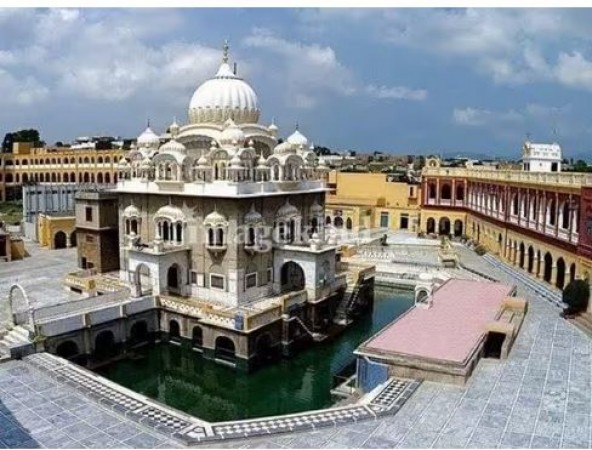
Gurudwar Sri Panja sahib is situated at Hansa Abdal , Pakistan. It holds great historical and religious significance for Sikhs worldwide and is a popular pilgrimage site. The name "Panja Sahib" translates to "the place of the holy hand" and refers to a sacred rock bearing the handprint of Guru Nanak Dev, the founder of Sikhism.
The history of Gurudwara Panja Sahib can be traced back to the time of Guru Nanak Dev, who embarked on extensive travels to spread the message of Sikhism. According to Sikh tradition, Guru Nanak Dev visited Hasan Abdal during one of his journeys in the early 16th century. It is believed that he stopped to rest under a shady tree, now known as "Guru Nanak Jhira Sahib," to quench his disciples' thirst. Guru Nanak Dev's act of selfless service and compassion left a profound impact on the locals and laid the foundation for the Gurudwara Panja Sahib.
Also Read: Gurudwara Sri Goindwal Sahib: Establishment Of The Manji System
The primary significance of Gurudwara Panja Sahib lies in its association with Guru Nanak Dev. The handprint on the sacred rock is believed to be Guru Nanak Dev's, marking his divine touch. Sikhs consider it a symbol of spiritual power and blessings. The Gurudwara also holds historical importance as it stands as a testament to the journey of Guru Nanak Dev and the establishment of Sikhism.
Gurudwara Panja Sahib is an architectural marvel that reflects the rich Sikh heritage. The complex encompasses various structures, including the main Gurudwara building, a sacred pond, and several other smaller shrines. The main Gurudwara building features stunning domes, intricately carved walls, and a large prayer hall. The architecture incorporates a blend of Sikh and Mughal styles, creating a unique and visually captivating structure.
Also Read: Gurudwara Sri Tarn Taran: A Saving Boat
Gurudwara Panja Sahib serves as a place of worship, reflection, and community for Sikhs. The daily routine at the Gurudwara revolves around the recitation of the Guru Granth Sahib, the holy scripture of Sikhism. Devotees participate in early morning prayers (Asa di Var), listen to religious discourses, and engage in Kirtan (devotional singing). Langar, the community kitchen, offers free meals to all visitors, irrespective of their religious or social background, promoting the values of equality and selfless service.
Gurudwara Panja Sahib attracts a significant number of Sikh pilgrims from around the world, especially during special occasions and festivals. The annual celebration of Guru Nanak Dev's birthday (Gurpurab) is a grand affair at Panja Sahib, with devotees gathering in large numbers to pay their respects and seek blessings. The atmosphere is filled with devotion, spirituality, and a sense of unity among the Sikh community.
Also Read: Gurudwara Sri Kartarpur Sahib: Birth Place Of Guru Nanak Dev Ji
Gurudwara Panja Sahib stands as a symbol of interfaith harmony and mutual respect. Despite being located in Pakistan, the Gurudwara welcomes visitors from all faiths and backgrounds. It serves as a bridge of understanding, fostering peace and goodwill among different religious communities.
Gurudwara Panja Sahib holds immense religious, historical, and cultural significance for Sikhs worldwide. It stands as a testament to Guru Nanak Dev's teachings of equality, compassion, and selfless service. The architectural beauty, religious practices, and interfaith harmony associated with Panja Sahib make it a revered destination for spiritual seekers and a symbol of unity among different communities.
Also Read: Gurudwara of Delhi: Unique History